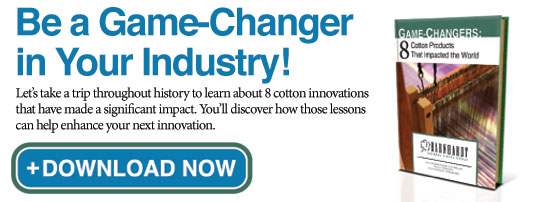Differentiating your products sounds great on paper. However, it’s much harder to put into practice, especially without a definitive strategy, and especially if you’re an established business. Turning on a dime to fill an industry void takes a commitment from every division of your company, from those who toil away in R&D to the marketing team that has to present it effectively to the public.
With this in mind, here are five things to consider when differentiating your groundbreaking product:
1. Knowing your customers is not enough
Yes, you need to know your customer. But to differentiate products, you have to know something they don’t even know: what can they not live without? Think of products that are pervasive in today’s society, such as a cell phone. Just a couple of decades ago, no one had one. Today, almost everyone does. But there’s no need to get caught up in high-tech, either. Consider disposable diapers and tampons, too. While today we can’t fathom living without them, there was a time when we did—but an innovator wisely filled that gap. Those gaps are usually rooted in solving a problem.
2. Stick to your core values and strengths
While mission statements can come across as hokey or highfalutin’, the reason they were written in the first place was to serve as your company’s compass. Consider Amazon.com. Their mission is “to be Earth’s most customer-centric company, where customers can find and discover anything they might want to buy online, and endeavors to offer its customers the lowest possible prices.” While early on this applied to all kinds of consumer goods, now it also applies to cloud-based services for music, books, and movies, too. You’ll be surprised at how open-ended a good mission statement can be, and what avenues it offers you to differentiate.
3. Never rest on your laurels
Complacency only ensures that your competitors with catch up with you, even if your star differentiator is killer. There’s always a next iteration, always a way to improve. Take Merck’s Dr. Scholl’s brand. Early on, you bought a one-size-fits-all set of soles in your local drug store that you cut to fit your shoe size. Today, in those same drug stores, they offer FootMapping Centers that utilize pressure sensors that assess which parts of the foot take the biggest beating. Now there’s no scissors necessary, and customers receive a customized orthotic solution. This is a great example of taking a core product and evolving it.
4. Features are critical, but not everything
While creating a differentiator certainly involves a focus on distinctive features, ease-of-use, and superior functionality, it’s important to remember that other factors play a role in your success, such as how the product is manufactured, branded, and marketed. Choosing the wrong manufacturer can take your timeline off track, while a poorly executed marketing campaign can fall on deaf consumer ears. Even if you have an incredible life-changing product, there must a sound strategy to build it, and introduce it.
5. Patience can make perfect
Dovetailing with #4, your strategy will often dictate your launch. However, rushing this process can cause missteps that will make you take one step forward, then two steps back. Product integrity goes hand-in hand with being a differentiator. Once again, an idea is only as good as its execution. Instead of having anxiety over someone beating you to market, worry about ensuring quality control. This will ensure you not only gain customers, but keep them, too.
The final word: trust your product
What these five nuggets have in common is one thing: you must have confidence in your product. Without that, some of these steps are non-starters. Keep in mind every innovator had moments of doubt, and experienced serious setbacks. They prevailed due to a staunch belief in their idea, a belief based on bridging a divide between the consumer and a need. With that leading the way, your product has a far greater chance of being a game-changer, and leaving your competitors behind.
Interested in hearing about cotton products that were differentiators for their companies? Our white paper “Game Changers: 8 Cotton Products that Impacted the World” is available for download.

